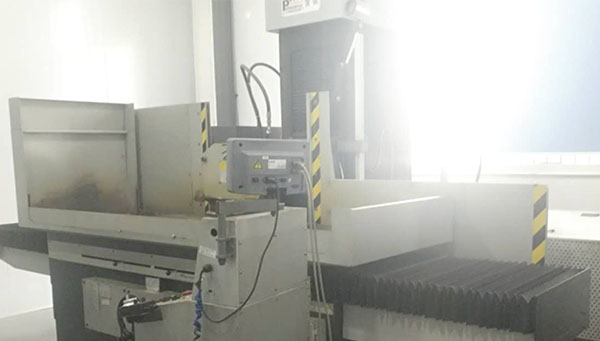An Overview of Centerless Grinding for Efficient and Precise Part Processing
At Elite, a leading plastic injection mold manufacturer in China, precision, and efficiency are at the heart of everything we do. One of the most effective machining processes we utilize is centerless grinding. This method allows us to achieve high-precision results while ensuring efficient and cost-effective part processing. In this article, we will provide an overview of the centerless grinding process, discuss its key advantages, and explain how it plays a crucial role in producing top-quality mold components at Elite.
What is Centerless Grinding?
Centerless grinding is a precision machining process that removes material from a workpiece without the need for a center to hold the workpiece in place. Unlike traditional grinding methods that rely on centers or chucks to secure the workpiece, centerless grinding uses two rotating wheels—a grinding wheel and a regulating wheel—along with a work rest blade to support the workpiece.
Key Components of Centerless Grinding:
- Grinding Wheel: The grinding wheel removes material from the surface of the workpiece to achieve the desired shape and finish.
- Regulating Wheel: This wheel controls the rotation and feed rate of the workpiece, ensuring consistent material removal.
- Work Rest Blade: The workpiece rests on this blade while being ground, allowing for stability and support during the grinding process.
Types of Centerless Grinding
Centerless grinding can be performed using different methods depending on the shape and size of the workpiece, as well as the precision requirements. The three main types of centerless grinding are:
1. Through-Feed Grinding
In through-feed grinding, the workpiece passes between the grinding and regulating wheels in a straight path. This method is ideal for producing cylindrical components that require uniform material removal along their length.
- Application: Through-feed grinding is commonly used for grinding long, cylindrical parts such as ejector pins and shafts, where efficiency and high production speed are crucial.
2. In-Feed Grinding
In-feed grinding, also known as plunge grinding, is used for parts that have varying diameters or complex shapes. The workpiece is fed into the grinding wheels, and material is removed at specific points to achieve the desired shape.
- Application: In-feed grinding is used for parts that require detailed features, such as mold components with shoulders, tapers, or other intricate geometries.
3. End-Feed Grinding
In end-feed grinding, the workpiece is fed axially into the grinding machine. This method is suitable for grinding parts with tapered or stepped profiles.
- Application: End-feed grinding is used for parts that require precision grinding on one end, such as certain mold inserts or ejector pins with a defined end profile.

The Advantages of Centerless Grinding
Centerless grinding offers several significant advantages over other machining processes, making it an essential method for producing high-precision parts efficiently at Elite.
1. High Precision and Tight Tolerances
Centerless grinding is known for its ability to achieve extremely tight tolerances, often within microns. This is crucial for manufacturing mold components that require exact dimensions and flawless finishes.
- Benefit: The high level of precision ensures that mold components fit together perfectly, reducing the risk of defects in the molded plastic parts.
2. Efficiency and High Throughput
Because centerless grinding is a continuous process, it is highly efficient for producing large quantities of parts in a short amount of time. The ability to grind multiple parts simultaneously without the need for additional clamping or fixture setup reduces processing time.
- Benefit: This high throughput allows Elite to meet large production demands while maintaining consistent quality, making centerless grinding ideal for high-volume manufacturing.
3. Smooth Surface Finishes
The grinding wheel in the centerless grinding process produces smooth surface finishes that are crucial for components like ejector pins and guide pins. A fine surface finish reduces friction between mold components, ensuring smooth operation and extended tool life.
- Benefit: Superior surface finishes enhance the efficiency of mold operation, reducing wear and extending the lifespan of mold components.
4. Versatility in Part Shapes and Sizes
Centerless grinding can accommodate a wide range of part sizes and shapes, making it a versatile solution for manufacturing various mold components. Whether producing cylindrical parts, stepped profiles, or tapered shapes, centerless grinding can handle complex geometries with ease.
- Benefit: The versatility of centerless grinding allows us to produce custom parts tailored to the specific needs of our clients across various industries.
5. Reduced Setup Time
Since the workpiece is supported by the regulating wheel and work rest blade, there is no need for complex fixtures or clamps. This simplifies the setup process, reducing the time required to prepare for each job.
- Benefit: Faster setup times translate into shorter lead times and greater flexibility in accommodating last-minute design changes or production requirements.
How Elite Uses Centerless Grinding for Mold Component Production
At Elite, we utilize centerless grinding to produce high-precision mold components that are critical to the functionality and quality of plastic injection molds. Below are some key components that benefit from centerless grinding in our manufacturing process.
1. Ejector Pins
Ejector pins are used to eject the molded part from the mold cavity once the injection process is complete. These pins must have smooth, precise diameters to ensure they function correctly without damaging the molded part.
- How Centerless Grinding Helps: Centerless grinding produces ejector pins with the required dimensional accuracy and smooth surface finishes, reducing friction during the ejection process and ensuring reliable performance.
2. Guide Pins
Guide pins help align the mold components during the injection molding process. These pins must be produced with high precision to ensure proper alignment and avoid mold defects.
- How Centerless Grinding Helps: By providing tight tolerances and smooth finishes, centerless grinding ensures that guide pins fit perfectly within the mold assembly, resulting in accurate alignment during each molding cycle.
3. Shafts and Cylindrical Components
In mold manufacturing, cylindrical components such as shafts play a critical role in the mechanical function of the mold. These components require precise diameters and high surface quality.
- How Centerless Grinding Helps: Through-feed centerless grinding ensures that cylindrical parts are produced with uniform dimensions and fine finishes, ensuring reliable operation and extended component life.
The Centerless Grinding Process: Key Steps
At Elite, we follow a meticulous approach to ensure high precision and quality throughout the centerless grinding process. Below are the key steps involved.
1. Preparation and Setup
Before grinding, the workpiece is carefully prepared, and the grinding wheel and regulating wheel are set up based on the material, part geometry, and finish requirements.
- Step: Select the appropriate grinding wheel for the material, and adjust the regulating wheel and work rest blade to position the workpiece correctly.
2. Initial Grinding Passes
The initial grinding passes focus on removing larger amounts of material to bring the workpiece close to the final dimensions. These passes help shape the part and remove any excess material.
- Step: Adjust the feed rate to remove material quickly and efficiently, ensuring that the part remains stable during the grinding process.
3. Finishing Passes
Once the rough dimensions are achieved, finishing passes are made to achieve the final size, shape, and surface finish. These passes are more precise, focusing on removing smaller amounts of material for tight tolerances and smooth finishes.
- Step: Reduce the feed rate for finishing passes to achieve the required precision and surface quality.
4. Inspection and Quality Control
After the grinding process is complete, the workpiece is thoroughly inspected to ensure it meets all specifications. This includes measuring dimensions, roundness, and surface finish using advanced metrology tools.
- Step: Use tools such as micrometers and surface roughness testers to verify the accuracy and quality of the finished part.
Maintenance of Centerless Grinding Machines for Optimal Performance
To maintain the precision and efficiency of our centerless grinding machines, Elite follows a strict maintenance schedule. Regular maintenance ensures that the machines continue to perform at their best and deliver high-quality results.
1. Daily Cleaning
After each use, the grinding machine is thoroughly cleaned to remove dust, debris, and material residues. Keeping the machine clean ensures smooth operation and prevents contamination.
- Maintenance Tip: Clean the grinding wheels, work rest blade, and machine bed regularly to prevent buildup that could affect precision.
2. Lubrication of Moving Parts
Proper lubrication of the machine’s moving parts is essential to reduce friction and prevent wear. This helps maintain the machine’s accuracy and prolong its lifespan.
- Maintenance Tip: Lubricate all moving components, including the regulating wheel and spindles, according to the manufacturer’s guidelines.
3. Grinding Wheel Dressing
Over time, the grinding wheel may become clogged or glazed, reducing its cutting efficiency. Regular dressing of the grinding wheel restores its sharpness and ensures consistent material removal.
- Maintenance Tip: Frequently dress the grinding wheel to maintain sharpness and achieve consistent surface finishes.
4. Periodic Calibration
To ensure ongoing precision, the centerless grinding machine should be periodically calibrated. This includes checking the alignment of the grinding wheel, regulating wheel, and work rest blade.
- Maintenance Tip: Schedule regular calibration checks to ensure the machine continues to operate within the required tolerances.
Conclusion
Centerless grinding is an essential machining process that brings efficiency, precision, and versatility to mold component production at Elite. By leveraging the advantages of centerless grinding, we can produce high-quality, complex parts with tight tolerances, smooth surface finishes, and high throughput. This process allows us to meet the exacting demands of plastic injection mold manufacturing while ensuring consistent quality and cost-effective production.
If you are seeking a reliable plastic injection mold manufacturer with expertise in centerless grinding, Elite is your trusted partner. Contact us today to learn how our precision machining capabilities can support your manufacturing needs.
Related news
Our Certificates
By co-operating with Elite Mold, you have selected one of the most reliable ISO 9001 certified plastic mold manufacturer, Elite Mold as a plastic injection mold manufacturer specializing in plastic injection mold and supplying plastic injection molding services for plastic mold design, prototype makings, mold flow analysis, precise machining, OEM services, ODM services and so on, building custom plastic injection molding. We are committed to enhance the Process optimized and quality of service, shorten lead time and assist in lowering inventory, by providing new products every year to bring in continuous and higher profits for our clients. The ability to produce mold at the International standard, strong engineering and mold design capability, aggressive delivery, competitive pricing and business integrity continues to be the success factor of Elite Mold.










